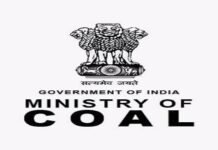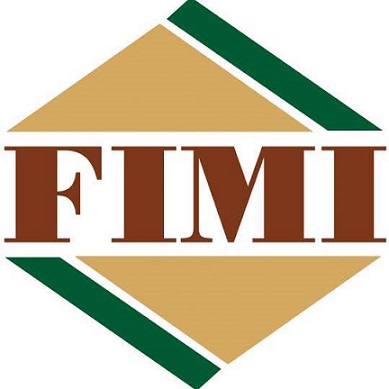By Our Correspondent
BHUBANESWAR/NEW DELHI: With last bidding of 24 mineral blocks fetched high premium in Odisha, and a strong attempt by players who had bid unsustainably high auction premiums to include captive sales transactions in National Mineral Index(NMI), the Federation of Indian Mineral Industries (FIMI), has urged the Union Mines Ministry to continue with the present system of average sale price published by Indian Bureau of Mines (IBM) which it says is the most effective and transparent way to ensure price discovery and revenue to the exchequer.
FIMI submitted that the present system of ASP is a realistic price discovery mechanism, wherein the actual transaction price of top 10 non-captive mines in Odisha sold at arm’s length basis is captured. In short, ASP is the weighted average of the ex-mine prices of non-captive mines. National Mineral Index is being developed on the lines of the National Coal Index, which is based on Coal India notified prices and auction prices and import prices.
While majority of the coal consumed in the country is for power, which is a regulated sector, all non-coal minerals are consumed for non-regulated sectors such as steel, aluminium, cement, etc. Considering this fundamental difference of regulated and non-regulated consuming sectors, the methodology of calculation of NMI should fundamentally differ from that of NCI.”
FIMI added “We also understand that there is a strong attempt by players who have bid unsustainably high auction premiums to include captive sales transactions in NMI. This will help such captive players to report lower than market transactions, which will be captured in NMI, eventually bringing it down and associated statutory payments to the exchequer,”. This comes in the wake of the government earlier stating that it is in the process of developing nation mineral index for various minerals, it said.
Federation of Indian Mineral Industries (FIMI) established in the year 1966 is an all-India apex body to promote the interests of all mining (including coal), mineral processing, metal making and other mineral-based industries and to attend to the problems faced by them in lease grants, renewals, tenures, production, taxation, trade, exports, labour, etc.
FIMI envelopes in its fold mining, mineral processing, metal making, cement, coal and other mineral-derived industries as well as granite, stone, marble and slate industries – private, joint and public sectors – of the country. It has more than 400 direct members and 25 regional associations which represent local small mining units in the country.
A week back, FIMI secretary general RK Sharma has brought to the attention of the Odisha Government that the Union Mines Ministry in developing the NMI on the lines of National Coal Index (NCI).The NMI is that the present statutory payments including auction premium, royalty, DMF and NMET based on Average Sale Price (ASP) published by IBM.
FIMI has urged the Government to consider continuing with the present ASP system and even if NMI is introduced, the fundamentals of the ASP system should be incorporated within NMI, urged FIMI.The FIMI pointed out that the National Coal Index (NCI) is based on Coal India Limited (CIL) notified prices, CIL auction prices and import prices.
While majority of the coal consumed in the country is for power, which is a regulated sector, all non coal minerals are consumed for non –regulated sectors such as steel, aluminum, cement etc.Considering this fundamental differences of regulated and non-regulated consuming sectors, the methodology of calculation of NMI should fundamentally differ from that of NCI, pointed out an expert.
Further, NMI should capture only the mineral sales transactions done at arm’s length basis so as to avoid any conflict of interest or manipulations by certain players by transacting at artificially low prices, pointed out FIMI.As NMI is expected to form the basis of all statutory payments, therefore, allowing non-arm’s length transactions especially the transactions by captive players in NMI may lead to distortions and substantial reduction in statutory payments, resulting in huge loss to the exchequer.
The FIMI has urged the Government that NMI should only capture the transactions made at arm’s length i.e. sales by non captive mines and only those sales by captive mines, which are done at arm’s length, adding any quantity of mineral used for captive purpose should not be considered in NMI.Under this backdrop, FIMI has requested the State Government to take up the issue with Ministry of Mines and impress upon them to continue the system of ASP published by IBM, said sources.
Union Coal and Mines Ministries have introduced slew of legislative reforms in coal & mining sector. National Mineral Index could adopt the strong suits of the National Coal Index capturing details from all price sources such as captive and non-captive mines etc. This methodology just as in coal will reflect the true & useful value of the minerals and will boost the attractiveness of the Indian mining sector. A just and uniform system for development of National Mineral Index for all minerals can go a long way in ensuring a competitive mining sector inviting healthy competition in auctions and active participation by smaller mining companies.
Decision to open the coal sector for commercial mining, implementation of National Coal Index and commencement of the auction process of commercial coal blocks can transform the mining sector. It can help the country save around INR 80,000 crores per year on account of coal import by augmenting production in the country. In addition, the auctions are likely to generate a healthy revenue stream and create multiple livelihood opportunities.
Mining sector can benefit from timely implementation of the already announced mining sector reforms. This include introduction of single stage seamless auction of Exploration cum Mining cum Production regime which is key to attracting best-in-class technology providers from around the globe for partnering and investing in India with a surety of getting the right to produce once the discovery is established.






























